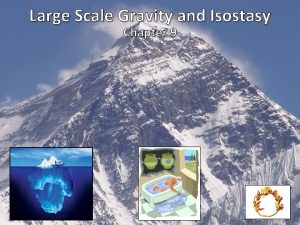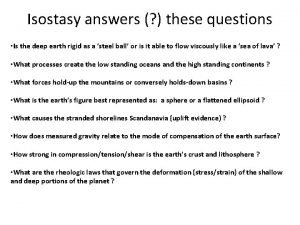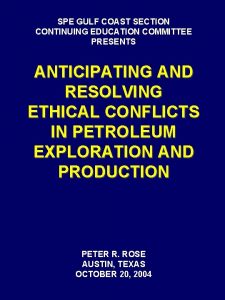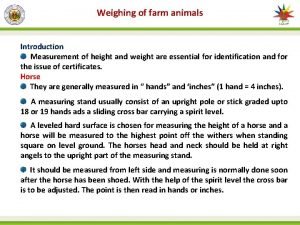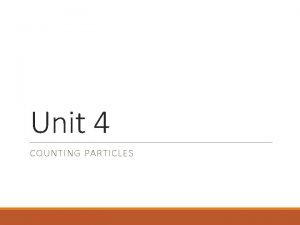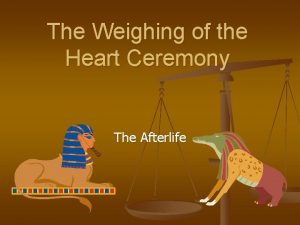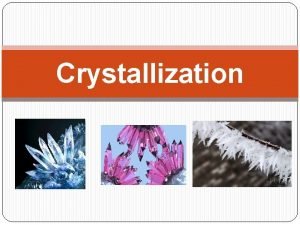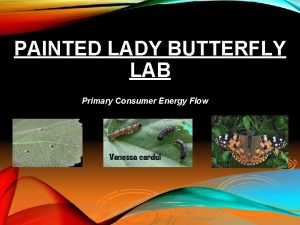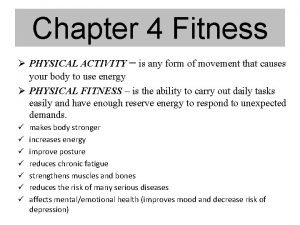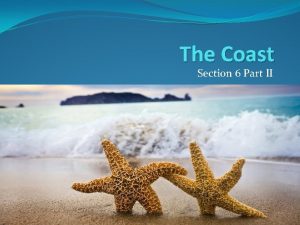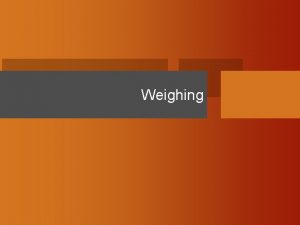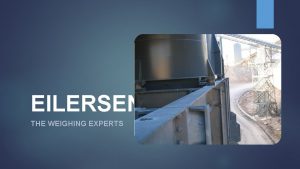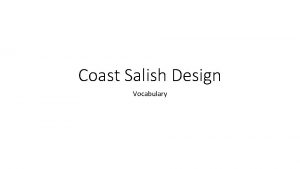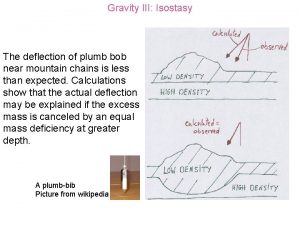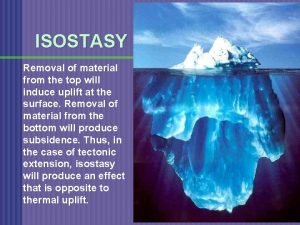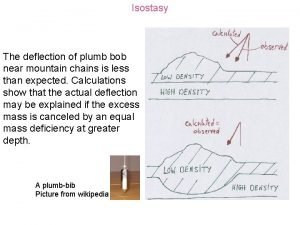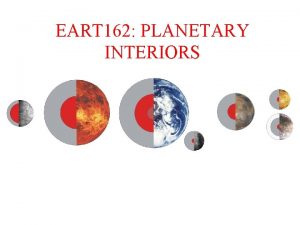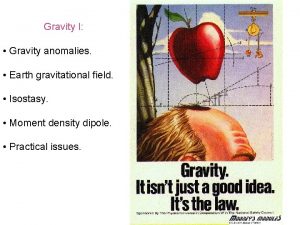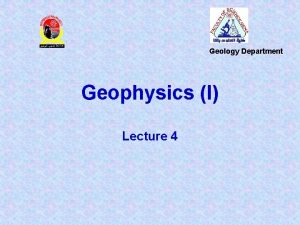The Coast Section 6 Part II Isostasy weighing





















- Slides: 21

The Coast Section 6 Part II

Isostasy �“weighing the same” �Buoyant properties of layers of rocks that float on other layers (due to density and thickness) �Crust ‘floats’ on denser, underlying layer

Continental shelf �Continental shelf – gently sloping region surrounding continents (sea is relatively shallow) �Covered in sediments (erosion of continents) �Part of continent was above sea level during ice age (sea level was lower then) �Water depth over continental shelf depends on 2 factors: � Isostatic changes in land height � Changes in sea level

Principle of Isostasy �Crust is higher where it is thicker and less dense �Lower = thinner and denser Layer Density = g per cm 3 Continental Crust 2. 7 – 3. 0 Sediments on continental shelf Oceanic crust 2. 4 Mantle 3. 3 – 5. 7 3. 0 – 3. 3 Highest density

�Continental crust – mostly made of granite (less dense rock) �Granite: igneous rock made with ~20% quartz �Oceanic crust – basalt (more dense rock) �Basalt: igneous rock less than 20% quartz, mostly volcanic �So, continental plates ride on the denser oceanic plates


Littoral Zone �Land meets sea �Nature of shore factors: �Geology of adjacent land �Exposure to erosion by sea �Area of coast between high water mark and lowest part of submerged shore

Rocky Shore �Rock exposed to sea erosion �Variety sized boulders, stones and pebbles �Granite = resistant to weathering �Sandstone = easily broken down

Rocky Shore �Most exposed type of shore �Most resistant to erosion �Largest boulders left at the top of the shore due to pounding waves �Very steep cliffs to horizontal flat rocks with a wavecut platform

Limiting Factors Rocky Shore �Support wide range of organisms �Stable substrate �Large rocks and stones – firm surface �Algae �Mollusks and cnidarians (and sea anemones) �Rock pools retain water when tide recedes

Rocky Shore �Environmental Factors that influence communities: �Desiccation (extreme drying) � Species near top of shore exposed to air for longer periods �Temperature �Wave action �Light intensity �Aspect �Slope �Nature of substrate

Sandy Shores �Erosion of sandstone �Deposition of sand by the sea �Silica and other minerals �Slope gradually toward sea

Sandy Shores �Unstable �Fine particles are easily moved by winds and tides �Not a suitable substrate �Sea weeds �No shelter for organisms at surface �Under: burrowing organisms �Ghost crabs, bivalve mollusks, annelid worms (ragworms and lugworms) �If sand mixed with muddy deposits, more stable and supportive

Muddy Shores �Least exposed to erosion �silt particles can settle �Very fine mineral sediments �Organic remains �Little slope �Can form mud flats

Estuary �Semi-enclosed body of water �Freshwater meets sea water �Muddy substrate – slow flow of water allows suspended particles to settle

Delta (∆) Get their name from the Greek letter �River carrying suspended sediments reaches large body of water (lake or ocean) �River increase in width = flow rate decreases �Suspended sediments settle �Accumulate into a fan-shaped structure over time �River divides to form distributary channels � 2 examples (next page)

Nile River Delta ∆

Mississippi River Delta ∆

Diameters of Mineral Particles Particle Type Diameter (mm) Silt 0. 002 to 0. 02 Fine Sand 0. 02 to 0. 2 Coarse Sand 0. 2 to 2. 0 Gravel (small stones) > 2. 0

Mangroves (Swamp, Forest) �Trees and shrubs in tropical/subtropical saline coastal habitats �Between 25⁰N and 25 ⁰S �Form woodland or shrub land habitat (coastal/estuarine conditions where sedimentation of silts occur) �Specifically adapted to: �Wide range of salinity �Low oxygen concentrations in sediments

Mangroves �Pneumatophores - specifically adapted root-like structures that obtain oxygen directly from air �Extensive root systems: �Trap particles suspended in water �Reduce water flow � Increases deposition of sediments �Dissipates wave energy � Protects coastal area from erosion �Habitats for: � Algae, oysters, crabs, barnacles and other crustaceans, sponges, fish
 Pratt hypothesis formula
Pratt hypothesis formula Isostasy
Isostasy Isostasy animation
Isostasy animation Spe code of ethics
Spe code of ethics Methods of weighing animals
Methods of weighing animals Counting by weighing examples
Counting by weighing examples Anubis heart weighing ceremony
Anubis heart weighing ceremony Lesson 75 make it count counting by weighing
Lesson 75 make it count counting by weighing Weighing scale drawing
Weighing scale drawing Equipment used in crystallization
Equipment used in crystallization A crate of bananas weighing 3000 n
A crate of bananas weighing 3000 n When calculating power you should use the formula p=
When calculating power you should use the formula p= A blue lab cart is traveling west
A blue lab cart is traveling west Zero error weighing scale
Zero error weighing scale Camping equipment weighing 6000 n
Camping equipment weighing 6000 n Weighing mechanisms in public forum debate
Weighing mechanisms in public forum debate What is the angle of inclination
What is the angle of inclination Weighing bridge software
Weighing bridge software Butterfly primary consumer
Butterfly primary consumer A box of books weighing 325 n
A box of books weighing 325 n Fitness chapter 4
Fitness chapter 4 A traffic light weighing 122 n
A traffic light weighing 122 n
